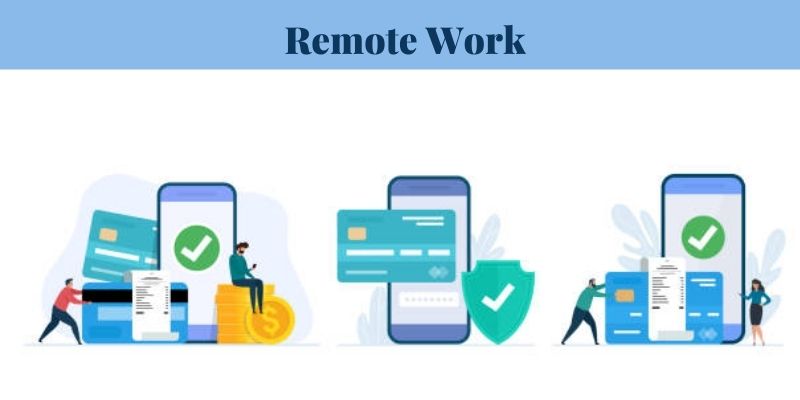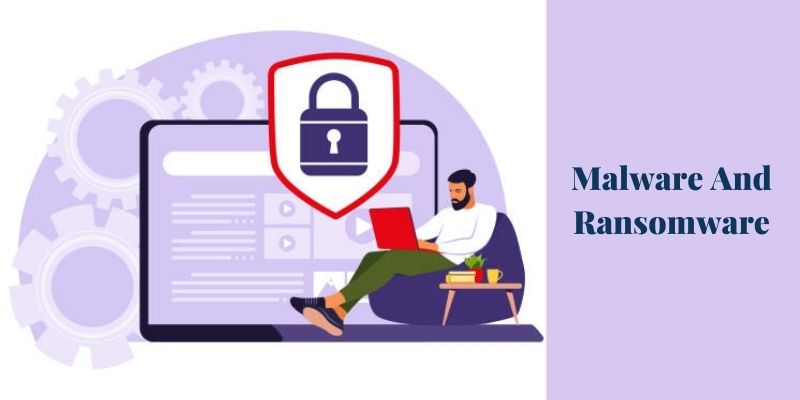Financial institutions are among the most often attacked companies online. Cybersecurity risks in online banking is one of the most important problems the financial sector is currently experiencing because it involves millions of clients and their private information. The challenges facing both digital-only banks and banks with physical branches are comparable, but as our world moves farther into the digital realm, banks that wish to satisfy demand without compromising security must find solutions to numerous significant cybersecurity issues. A wise financial institution would do well to take preventative measures to safeguard against the various cyber hazards it must deal with. In this article, tapchiai.net will discuss the top 7 cybersecurity risks in online banking.
The Top 7 Cybersecurity Risks in Online Banking
Remote Work
Since the implementation of COVID-19, working remotely is no longer the exception but rather the standard way to complete tasks. While many financial organizations adopted remote working practices out of necessity, employees still prefer to stay at home.

In the banking industry, remote labor does necessitate attention to cybersecurity. People working from home, coffee shops, or other remote locations are not covered by the physical cybersecurity defenses of an office, which makes it more difficult for IT to protect internal software and critical customer data from hackers.
By proactively training staff members on what to look for and how to be secure while working remotely, the cybersecurity challenge in this situation can be best managed. This will increase staff productivity and assist in reducing the chance of data breaches.
Software Supply Chain Cyber Attacks
Targeting a software provider and using their distribution networks to spread malicious code to clients is a common malware distribution strategy. This attack spreads across the supply chain as updates or products that seem to be genuine. Even though these attacks may use third-party services, it’s not unusual for an attacker to insert harmful code into phony updates from the main vendor. These attacks damage the distribution systems, provide attackers access to the supplier’s networks, and give them time to remain in control of the systems.
The best way to prevent supply chain assaults is to be proactive about screening for vulnerabilities and educate customers about how upgrades may allow cyber attackers to obtain their personal information.
Phishing
Phishing assaults are still one of the largest hazards to the banking industry, and in the new digital age, they are a popular technique for cybercriminals. Credential phishing, often known as email or domain spoofing, is the practice of malicious actors tricking people into downloading malware or divulging personal information.

Phishing poses a threat to both clients and employees in the banking sector. Attackers may send clients emails that appear to be official bank correspondence in an effort to steal their financial information. Employees must also watch out for phishing scams that ask for login credentials to obtain client data.
Social Engineering
Phishing and social engineering go hand in hand, but their goals can differ, and social engineering can also encompass whaling attacks. Customers and workers are frequently the weakest link in the security chain since they might be duped into divulging confidential information and login credentials.
Social engineering can take many different forms, such as phishing, whaling, or the distribution of fake invoices that appear to be from a reliable source. Keep your personnel informed about social engineering methods and how these threats are evolving.
Malware And Ransomware
Among the most dangerous threats in the last few of years are ransomware and malware attacks. Most industries are susceptible to malware and ransomware attacks, so the danger is not just confined to the financial services sector. Attacks by malicious software are becoming more frequent and sophisticated.

To protect against these sophisticated threats and to reduce security risks in this situation, organizations adopt more contemporary cybersecurity techniques. AI, machine learning, and behavioral analysis are increasingly popular cybersecurity solutions that can be used as a first line of protection against these typical attacks. The cybersecurity of banks must advance to meet the most recent cybersecurity threats and prevent a data breach that could harm their brand.
Cloud-based Cybersecurity Threat
Attackers have taken use of cloud-based assaults to capture sensitive information as more software systems and data are stored and enabled on the cloud. As a result, there has been an increase in cloud-based attacks. In order to prevent damaging breaches, banks must make sure that the cloud infrastructure is configured securely.
Customer Behaviors
Data security issues can arise from both employee and customer conduct. In some circumstances, users of online banks who use poor security procedures risk having their information compromised in a matter of seconds. Losing confidential financial information can happen quickly as a result of anything from repeating passwords to opening shady emails.
There are a few methods that digital banking companies can stop breaches brought on by user error. Utilizing mobile apps that are well-designed, have an easy user interface, and include security features might help reduce some of the danger. Instead of using a password, a savvy user might access their account using the fingerprint scanner on their phone or similar multi factor authentication mechanism.







